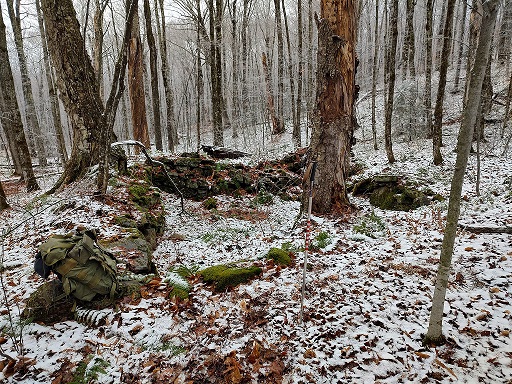"The historical and cultural foundations of the Nation should be preserved as a living part of our community life and development in order to give a sense of orientation to the American People" (54 USC §300101 et seq.) Section 1(b)(2)).
What is the National Historic Preservation Act (NHPA)?
Following the end of World War II, the United States went through a period of unparalleled

growth, marked by such projects as the US Interstate System and the Urban Renewal Program. As these developments reshaped the country’s towns and cities, many communities became increasingly concerned about impacts to the cultural landscape and the loss of connection and collective identity defined by that landscape.
In response to these growing concerns, Congress passed the National Historic Preservation Act in 1966, requiring Federal agencies to consider the effects on historic properties of the projects they fund.
Under Section 106 of the NHPA , Federal agencies are required to:
- “…take into account the effect of the undertaking on any district, site, building, structure, or object that is included in or eligible for inclusion in the National Register” (54 U.S.C. § 306108 Section 106). What the law therefore requires is that any Federal agency or any entity that undertakes a project with funding from a Federal agency, must consider the effects that their project might have on properties that are listed or eligible for listing on the National Register of Historic Places (NRHP).
- “accommodate historic preservation concerns with the needs of Federal undertakings through consultation among the agency official and other parties… The goal of consultation is to identify historic properties potentially affected by the undertaking, assess its effects and seek ways to avoid, minimize or mitigate any adverse effects on historic properties” 36 CFR § 800.1(a). The key words here are “accommodate” and “consultation”. In short, the goal is not to stop change but rather to manage change. Through consultation with stakeholders, the process defines how those planning the proposed undertaking can accommodate the interests of different stakeholders through avoiding, minimizing, or mitigating possible impacts to historic properties.
The NHPA created several different entities including:
- The State Historic Preservation Office (the SHPO), identified as the Division for Historic Preservation (DHP) in Vermont.
- The Governor of every state is required to nominate a State Historic Preservation Officer to manager the State Historic Preservation Office
- The responsibilities of the SHPO include but are not limited to:
- Overseeing the review process created by the NHPA
- Maintaining an inventory of historic properties within the state
- Creating a statewide preservation plan
- Being available for consultation with Federal and state agencies, local governments, and the public
 Tribal Historic Preservation Offices (THPOs)
Tribal Historic Preservation Offices (THPOs)
- The THPOs mirror the responsibilities of the SHPOs but represent Federally recognized tribes, overseeing the processes associated with the NHPA on tribal lands.
- The THPO for the Stockbridge-Munsee is based out of Williamstown, Massachusetts and reviews Federally funded projects in Addison, Rutland, and Bennington counties.
- Advisory Council for Historic Preservation (ACHP)

- The ACHP is made up of 20 people drawn from a variety of groups and organizations.
- Based in Washington, DC, the ACHP oversees the compliance of Federal agencies with the Section 106 process.
- The National Register of Historic Places (NRHP)
- The NRHP is a list of properties from across the country that have been nominated as having
 historic or archaeological importance.
historic or archaeological importance. - The National Park Service manages the list with the goal of identifying, evaluating, honoring, and protecting historic and archaeological resources.
- A listing on the NRHP does not mean that a Federally managed or funded project cannot impact that resource. Rather, a listing or eligibility for listing on the NRHP means that the Federal agency must consider the effects of a proposed project on the listed property, and identify ways to manage those effects
- The NRHP is a list of properties from across the country that have been nominated as having

The process defined in Section 106 of the NHPS is codified in 36 CFR 800, defining the role played by each of the elements listed above including the SHPO, THPO, ACHP, and the NRHP. 36 CFR 800 states that the agency or organization using Federal funds, must complete the Section 106 process before they can expend funds, and that they should complete the process early so that they can consider alternatives.
The process as defined in 36CFR800 includes:
- Establish the undertaking and determine if the undertaking has any potential to affect historic properties.
- Coordinate the Section 106 review process with other review processes.
- Initiate consultation with the SHPO and/or THPO.
- Involve other potential stakeholders in the consultation process.
- Determine and document the Area of Potential Effect (the APE) and review existing information on historic properties within the APE, making a “reasonable and good faith effort" to carry out appropriate identification efforts, including but not limited to:
- Background research,
- Consultation,
- Oral history interviews, and
- Field investigation.
- Apply the National Register criteria (36 CFR 60.4) to historic properties identified within the area of potential effect (APE) that have not been previously identified.
- Submit results of the review process to the SHPO and/or THPO with a recommendation about the potential effects of a proposed undertaking to historic properties. The SHPO and/or THPO have 30 days to respond.
